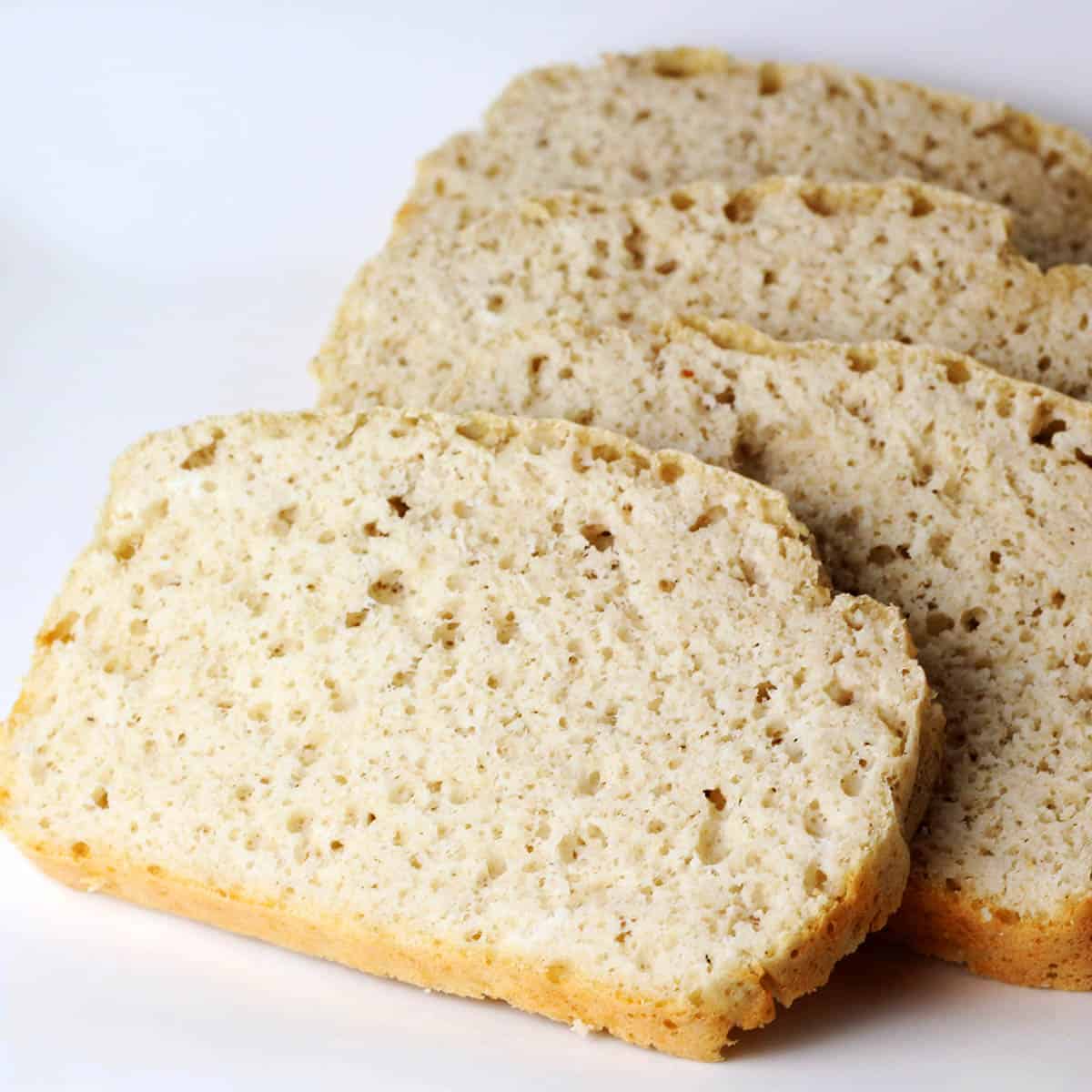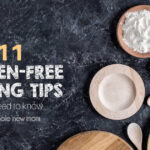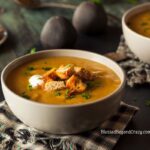Craving delicious, nutritious bread without the gluten? Imagine sinking your teeth into a warm, fluffy loaf packed with protein, crafted from simple, wholesome ingredients. This guide unlocks the secrets to creating just that, offering a variety of high-protein gluten-free bread recipes that are surprisingly easy to make. We’ll explore different flour blends, innovative protein additions, and simple techniques to achieve perfectly textured loaves every time, catering to diverse tastes and dietary needs. Prepare to elevate your baking game and discover a world of flavorful, healthy bread options.
From the satisfying chew of almond flour bread to the subtle sweetness of a banana-infused loaf, we’ll cover a range of recipes designed to suit every palate. Learn how to master the art of gluten-free baking, troubleshoot common issues, and discover the nutritional benefits of incorporating various protein sources into your bread. Whether you’re a seasoned baker or a complete novice, this comprehensive guide will empower you to create delicious, high-protein gluten-free bread that you’ll be proud to share.
Ingredient Focus

Boosting the nutritional profile of gluten-free bread often involves incorporating high-protein ingredients to compensate for the protein typically found in wheat flour. This enhances not only the nutritional value but also the texture and overall quality of the final product. The following recipes showcase how different protein sources can be effectively integrated into gluten-free bread making.
High-Protein Bread Recipes
The following recipes demonstrate the versatility of using various protein sources to create nutritious and delicious gluten-free bread. Each recipe highlights a unique protein source and its corresponding impact on the bread’s nutritional value and sensory attributes.
- Recipe 1: Almond Flour & Chia Seed Bread: This recipe leverages the protein and healthy fats in almond flour and the fiber and omega-3s in chia seeds. Almond flour provides a subtly sweet and nutty flavor, while chia seeds add a slightly gelatinous texture when hydrated, contributing to moisture retention. The combination results in a dense, moist loaf.
- 1 cup almond flour
- 1/4 cup chia seeds
- 1/4 cup psyllium husk powder
- 2 large eggs
- 1/2 cup unsweetened applesauce
- 1 teaspoon baking powder
- 1/2 teaspoon salt
- Optional: Sweetener (maple syrup or honey)
- Recipe 2: Whey Protein Bread: Whey protein isolate adds a significant protein boost to this recipe. Whey protein contributes a smooth, slightly sweet taste and helps create a softer crumb. It’s important to choose an unflavored whey protein to avoid interfering with the bread’s overall taste.
- 1 cup gluten-free all-purpose flour blend
- 1/2 cup whey protein isolate (unflavored)
- 1 teaspoon baking powder
- 1/2 teaspoon baking soda
- 1/2 teaspoon salt
- 1 cup milk (dairy or non-dairy)
- 1 large egg
- 2 tablespoons melted coconut oil
- Recipe 3: Sunflower Seed & Pumpkin Seed Bread: This recipe uses a blend of sunflower and pumpkin seeds, providing a substantial amount of protein, healthy fats, and fiber. The seeds offer a pleasant crunch and add a slightly earthy flavor to the bread.
- 1 cup gluten-free oat flour
- 1/2 cup sunflower seeds
- 1/2 cup pumpkin seeds
- 1/4 cup flaxseed meal
- 2 large eggs
- 1/2 cup unsweetened applesauce
- 1 teaspoon baking powder
- 1/2 teaspoon salt
Taste and Texture Comparisons
The three breads exhibit distinct taste and texture profiles due to the varying protein sources. The almond flour and chia seed bread boasts a slightly nutty and moist crumb with a subtle chewiness from the chia seeds. The whey protein bread offers a softer, more tender crumb with a mild, almost imperceptible sweetness. Finally, the sunflower and pumpkin seed bread presents a delightful crunch from the seeds and a more robust, earthy flavor profile, with a slightly denser texture than the other two.
Baking Time and Temperature Adjustments
Adding high-protein ingredients can affect the baking time and temperature. Higher protein content often leads to a denser loaf that requires a slightly lower temperature and potentially longer baking time to prevent burning. For example, the whey protein bread, with its high protein content, might benefit from baking at 350°F (175°C) instead of 375°F (190°C) for a similar amount of time as a gluten-free bread without added protein. It’s crucial to monitor the bread’s internal temperature using a thermometer to ensure it reaches 200-210°F (93-99°C) for optimal doneness. Always check for doneness before removing from the oven, as baking times can vary depending on oven type and other factors. Experimentation and observation are key to achieving the perfect bake.
Step-by-Step Recipe Creation
This recipe details the creation of a high-protein, gluten-free bread using simple, readily available ingredients. The resulting loaf boasts a satisfyingly dense crumb, a subtly nutty aroma, and a lightly sweet taste, perfect for enjoying with various spreads or as a side to a hearty meal. The focus is on achieving a nutritious and delicious bread without relying on complex techniques or obscure ingredients.
Simple High-Protein Gluten-Free Bread Recipe
This recipe yields one medium-sized loaf.
- Prepare the Dry Ingredients: In a large bowl, whisk together 1 ½ cups almond flour, ½ cup sunflower seed flour, 2 tablespoons chia seeds, 1 tablespoon flaxseed meal, 1 teaspoon baking powder, ½ teaspoon baking soda, and ½ teaspoon salt. The almond and sunflower flours provide a good base, while the chia and flax seeds add both protein and moisture. The leavening agents ensure a light texture.
- Combine Wet Ingredients: In a separate bowl, whisk together 1 cup unsweetened applesauce, ¼ cup milk (dairy or non-dairy), 2 large eggs, and 2 tablespoons honey or maple syrup. The applesauce adds moisture and sweetness, while the eggs bind the ingredients and contribute to the protein content. Milk adds richness and helps create a soft crumb.
- Combine Wet and Dry Ingredients: Gradually add the wet ingredients to the dry ingredients, mixing gently with a spatula or wooden spoon until just combined. Avoid overmixing, as this can lead to a tough loaf. The batter should be thick but still pourable.
- Add Protein Boost (Optional): For an extra protein boost, stir in ½ cup of cooked and crumbled chickpeas or lentils. This will slightly alter the texture and add a subtle earthy flavor.
- Prepare the Loaf Pan: Grease and flour (with almond flour) an 8×4 inch loaf pan. This prevents sticking and ensures easy removal of the baked bread.
- Bake the Bread: Pour the batter into the prepared loaf pan and spread evenly. Bake in a preheated oven at 350°F (175°C) for 45-55 minutes, or until a toothpick inserted into the center comes out clean. The baking time may vary slightly depending on your oven.
- Cool and Serve: Let the bread cool in the pan for 10 minutes before transferring it to a wire rack to cool completely. This prevents the bread from becoming soggy.
Ingredient Substitutions
Several ingredients can be substituted to accommodate dietary needs or preferences:
- Almond Flour: Can be substituted with other nut flours like cashew flour or pecan flour, although the flavor profile will change slightly.
- Sunflower Seed Flour: Pumpkin seed flour or another seed flour can be used as a replacement. The nutritional profile will vary slightly.
- Applesauce: Mashed banana or pumpkin puree can be used as a substitute for moisture and sweetness. The flavor will be affected accordingly.
- Milk: Any type of milk, including dairy or non-dairy alternatives (almond, soy, oat), can be used.
- Honey/Maple Syrup: Other liquid sweeteners like agave nectar or coconut nectar can be used.
Expected Texture, Aroma, and Taste
The finished bread will have a slightly dense but moist crumb, a texture similar to a quick bread. The aroma will be subtly nutty, thanks to the almond and sunflower flours, with a hint of sweetness from the applesauce and sweetener. The taste is lightly sweet and nutty, with a pleasant savory undertone from the seeds and flax meal. The overall flavor is balanced and not overwhelmingly sweet.
Mastering the art of high-protein gluten-free bread baking opens a world of culinary possibilities. Through exploring diverse flour blends, creative protein additions, and straightforward techniques, you’ve gained the tools to craft delicious and nutritious loaves that cater to various dietary preferences. Remember, the journey to the perfect loaf is filled with experimentation and discovery. So, gather your ingredients, embrace the process, and savor the rewarding experience of creating homemade bread that’s both healthy and utterly satisfying. Enjoy the delicious results!
FAQ Explained
Can I use a bread machine for these recipes?
While some recipes may adapt well to a bread machine, adjustments to baking time and settings might be necessary. Always refer to your machine’s manual and carefully monitor the baking process.
How long can I store gluten-free bread?
Gluten-free bread generally lasts 3-4 days at room temperature, wrapped tightly. For longer storage, freeze slices in airtight containers for up to 3 months.
What are some good substitutes for almond flour?
Other gluten-free flours like oat flour, cassava flour, or a blend of brown rice and tapioca flour can often be substituted, but results may vary in texture and taste. Experimentation is key!
Can I make these recipes vegan?
Many of these recipes can be easily adapted to be vegan by using vegan egg replacements (like flaxseed meal) and ensuring all other ingredients are plant-based.


